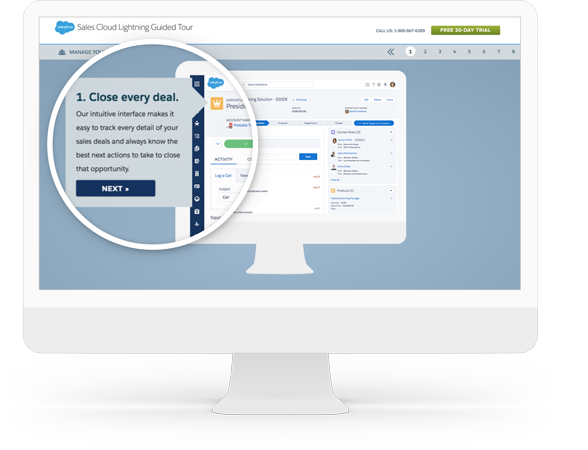crm implementation
Top 4 CRM Implementation Considerations

Universal CRM Implementation

CRM Implementation Steps
Implementation of a new CRM system generally occurs in four steps. Salesforce recommends these steps for a successful implementation:
Prepare by building a team, defining your vision, and setting goals.
Set up by importing data, defining permissions, and adding customizations.
Engage company-wide through training before going live.
Introduce additional functionality as your organization becomes comfortable with the CRM program.
CRM Implementation: A Safe Bet for ROI
Unfortunately, you may have read disheartening statistics about how some CRM implementations fail to produce the desired results. In fact, many reports showed CRM fail rates as high as 70%. While the statistic is certainly shocking, it may not be accurate. Venture Beat’s Stewart Rogers dispelled this number here. Rogers explains, “Only 77 (3.6 percent) stated that they had received no payback on their technology investment. A lack of payback could be for a variety of reasons. Maybe the technology isn’t working for them. Maybe it isn’t implemented properly. Maybe it was installed recently, and while it will gain a return, it is too soon to tell.”
The data is sound as far as positively correlating ROI with CRM implementation, so venture into your implementation with complete confidence. Realize, however, there is more to a successful CRM implementation than the four simple steps mentioned earlier. Consider ten key principles for success that most organizations ignore. These considerations are the behind-the-scenes principles that need to rule the company’s dialogue about CRM implementation.
Ten Points to Consider with CRM Implementation: What Most Organizations Forget
It’s important to start with a very specific vision.
You should approach CRM implementation with specific, measurable goals. These goals should be articulated before shopping for a CRM program even begins. Anyone who has taken a goal-setting seminar (and who in sales hasn’t?) knows about SMART goals, goals that are:
Specific
Measurable
Achievable
Realistic
Time-based
So why should goals for a sales software system be any different? Many companies implementing CRM systems get so sidetracked with the myriad capabilities of the sales software that they overwhelm their IT and sales staff, making the initial results disappointing. A better approach is to start with a specific functionality, say, entering data in order to visualize the sales pipeline. From there, the big picture of the sales pipeline can offer the next step in exploring the CRM program’s functionality.
Chances are, if your salespeople see the beauty of a sales pipeline visualized, they will be less likely to balk at entering data and begin to use the task and projection functionalities of your CRM program. Being able to project sales success encourages salespeople to nurture the customer relationship with all potential users or customers.
Get support from the bottom.
Just about everyone will give you the advice to make sure you have upper-management support. A Harvard article reported the importance of support from top managers.
However, unless the end users of the CRM system, the sales people, can see the value and personal return of CRM programs, the additional data entry proves tedious and cumbersome. When people on the front lines can see the value in CRM, success on a companywide scale is attainable.
Sean McPheat, of MTD Sales Training, believes there is a fundamental discord when salespeople, who love interacting with people, are asked to spend time interacting with CRM programs. To combat this problem, McPheat suggests asking the sales team for their input at the very beginning of the decision process. “The people that are going to use it should be the ones to help shape what it looks like and to have an important say in what it should and could do,” explains McPheat.
Recognize CRM is part of the bigger picture.
CRM adoption is positively correlated with sales success. In a 2016 report, CSO noted that sales intelligence solutions — such as advanced CRM systems — are critical for sales success. While sales intelligence software is essential, it is only part of the sales puzzle. CSO listed three other characteristics in addition to advanced CRM that must be in play for a sales organization to be successful:
Sales processes must be formal and dynamic.
Sales processes need to be adopted by the organization’s sellers.
Customer relationships should reflect salespeople as strategic advisors or trusted partners.
Part of seeing the bigger picture when it comes to CRM implementations means discovering the advanced functionality of your CRM system. If there ever was a real CRM implementation failure, it would be from underutilization. Many organizations’ processes lag behind the capacity of their technology, as reported in a Harvard Business Review article.
The HBR researchers found that successful sales organizations follow four practices: “They establish one undisputed source of performance data; they give decision makers at all levels near real-time feedback; they consciously articulate their business rules and regularly update them in response to facts; and they provide high-quality coaching to employees who make decisions on a regular basis.”
With these practices, sales, CRM, and the overall goals of a company can collide — all in a good way.
Seeing the Big Picture of CRM Makes for a Stunning Vista of Sales


Sell faster and smarter with the world’s #1 CRM solution
Related Articles
The Tools Your Startup Should Be Using — and Why
They Started at the Bottom of the Corporate Ladder. Now They're Millionaires.
Top Trends in Cloud Application Development
